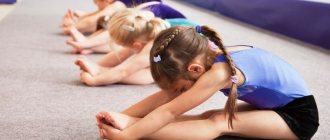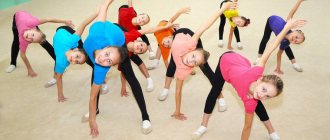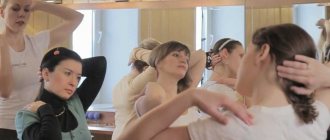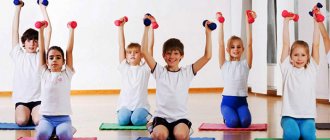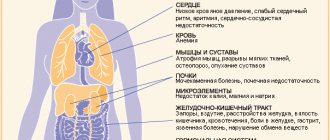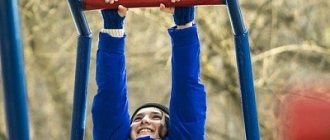JULY 31, 2018
Children's fitness is now represented in many fitness centers and has a variety of directions and types. Its popularity is easily explained - unlike physical education classes at school and sports clubs, in children's fitness, trauma is minimized, there are no contraindications, and you can choose an activity based on the needs of the child, without adapting to the general system. What types of children's fitness exist and why is it so useful for children?
Why do children need fitness?
Today's children can help fill the lack of physical activity necessary for the full development of the body by attending children's fitness classes. This type of fitness is gaining great popularity due to its versatility and the ability to choose a workout based on the needs of the child. What features of children's fitness do parents need to know and how to choose the right workout?
Physical education classes at school do not have an individual focus and are not enough for harmonious and proper development, and sports sections are not suitable for every child. The solution is children's fitness.
Progressive techniques
Of course, various systems are constantly being improved, and not just children’s fitness areas in clubs. However, in children's fitness there are more opportunities to change, try new things, and create revolutionary techniques. After all, where the experience of specialists in several fields at once is accumulated, it is easier to make real discoveries and immediately begin to implement them. Therefore, many fitness clubs study current trends in the physical and emotional development of children, combine best practices and offer innovative products. For example, such as the exclusive X-Fit concept for children from three to fourteen years old - Smart Fitness Kids. This is a system of functional training, a mix of progressive techniques, which allows not only to fully develop the physical qualities of children according to their age, but also to teach children to communicate, express their emotions, train their will and grow into active, enthusiastic people.
The benefits of children's fitness
Benefits of children's fitness classes:
- During the lesson, all muscle groups are worked out, coordination of movements is improved, the muscle corset is strengthened, which forms correct posture.
- Exercises normalize the functioning of the cardiovascular and respiratory systems and have a positive effect on the nervous system. Children's fitness has a healing effect on the body as a whole and stimulates the immune system.
- The interaction of children in a group solves communication problems and contributes to the child’s easy adaptation. Classes form self-discipline and develop thinking.
- Group classes develop leadership skills. Recommended for children with hyperactivity or low physical activity, they strengthen the nervous system and improve sleep.
- Children's fitness promotes the formation of healthy lifestyle habits.
Children's workouts: how to choose fitness for a child
“Children’s fitness is a system of activities aimed at the physical, creative, intellectual and harmonious development of the child,” explains Tatyana Rumyantseva, manager of the FizKult Rodionova children’s club. – In addition, properly designed programs not only provide prevention, but also help solve a number of important issues in children's health.
Diseases of the musculoskeletal system are one of the most popular problems in terms of the number of requests. The leading ones are various forms of poor posture and flat feet. Therefore, children's classes are aimed primarily at strengthening the muscles of the back, abs, lower legs and arch of the foot. Such training can begin at 3 years of age.
The next feature of children is frequent respiratory diseases. The solution is to include yoga with various breathing exercises in the children's fitness program. This, by the way, is a good prevention of asthma. These programs are designed for children aged 3-4 years.
Another, no less important, issue is various speech therapy disorders.
It is known that the higher the child’s motor activity, the better his speech. And special classes, for example “Theater of Hands,” are aimed at fine motor skills, which is directly related to the development of speech, thinking, imagination and even visual memory!” THUS, CHILDREN'S FITNESS CLASSES:
- aimed at developing rational motor skills, sensory and motor functions,
- prevention and correction of musculoskeletal disorders,
- acquiring proper breathing skills,
- development of the intellectual and emotional-volitional sphere
- providing additional physical activity for children
- development of social skills and formation of the habit of regular exercise.
In children's fitness, it is especially important that the groups are homogeneous in age and level of training. Therefore, in the FizKult network, lessons are compiled in accordance with the age, anatomical, physiological and psychological characteristics of children and are divided into five age groups.
“BABIES” FROM 6 MONTHS TO 3 YEARS OLD
For the “Toddlers” age group, it is very important that the first acquaintance with fitness takes place with the closest person - mom or dad. Parents help their child explore the world. And the coach focuses on developing basic motor skills.
“WHY” FROM 3 TO 5 YEARS OLD
In the “Pochemuchki” age group, the game method predominates. Games for children are a complex, multifunctional and educational process, and not just entertainment or a waste of time. Thanks to games, the child adapts to the world around him. Through play, a child develops physically, mentally and emotionally.
"FIDGE" 5-8 YEARS OLD
A special feature of the “Fidgets” age group is the active growth of the child. Therefore, it is very important to form and maintain correct posture. This problem is solved by the “Straightening”, “Olympic”, “Fitball” lessons, which strengthen the muscle corset. In addition, at the age of 6-7 years, it is important to prevent a decrease in flexibility - joint mobility and ligament plasticity. Girls are recommended to attend choreography and rhythmic gymnastics, boys – yoga.
"JUNIORS" 9-12 YEARS OLD AND "TEENAGERS" 13-16 YEARS OLD
“Juniors” and “Teenagers” are age groups in which it is important to improve coordination, motor skills, speed abilities and endurance. During this period, the participation of a trainer who can correctly distribute the load depending on the development of the respiratory, cardiovascular systems and muscles becomes especially important. We recommend attending Streetball, Football, and other game and team lessons.
Types of children's fitness depending on age
There are many types of children's fitness, combining different areas. Children 2-4 years old study with their parents, approximately 2 times a week for 20 minutes. The exercises are aimed at developing muscles, motor skills, and coordination of movements.
Children 4-6 years old are engaged in a program that involves aerobics, strength and functional training exercises in a playful way. Elements of logo-aerobics are included, when children need to pronounce rhymes or tongue twisters while performing exercises. The duration increases to half an hour, you can practice 2-3 times a week.
During classes, children aged 7-11 years perform exercises that strengthen muscles and posture. Exercise equipment is included in the training.
Teenagers train at a higher level of difficulty, the duration of the lesson increases to 40 minutes.
Age categories
Group 1 – children from 1.5 to 4 years old. Of course, if there are no contraindications and the child’s body is stronger and the baby is able to perform exercises. All classes take place in the presence of parents. Scrupulous mothers can watch their beloved children. The purpose of these classes is to strengthen the spine and muscle groups that are responsible for coordination and movement. Active work is being carried out to develop motor skills and classes with a speech therapist.
Group 2 – children aged 4 to 6 years. The training program gradually becomes more complex. The guys perform a set of different exercises (aerobic, strength and many other types of exercises). Classes must be aimed at developing the child’s speech (tongue twisters, counting rhymes, short rhymes and other exercises).
Group 3 (also called middle). It includes children from 7 to 11 years old. Coaches take into account the problems of children of this age and focus on them. For example, in girls - incorrect posture, in boys - building muscle mass and muscle development. The emphasis is on the development of the child’s strong-willed qualities. Some exercises are carried out on special children's simulators.
Group 4 (senior). This age group needs to develop stamina and distract children from their favorite gadgets. Guide your child to choose sports activities, for example, teach him to love dancing. Correctly develop the physical condition of a teenager.
Each age group studies at strictly allotted hours. The youngest train for no more than half an hour and only 1-2 times a week. Older children 30-35 minutes 3 times a week. But teenagers can study a little more, about 1 hour.
The hall where children's fitness classes are held is equipped with special equipment (ropes, swings, wall bars, massage mats, machines, exercise equipment, dry pools and much more).
Contraindications
There are no contraindications to children's fitness as such. After all, sports activities are useful for absolutely everyone. The program according to which the classes are held is not repeated. Everything a child needs to learn is extended over a full course. This is done so that the kids do not get overloaded during the lesson.
If a child, for some reason, cannot attend the main group, then you can go to classes in a specialized group with a minimum load or attend individual classes. Before your first visit to a fitness club, you need to make an appointment with a pediatrician and undergo an examination. After this, the doctor will give all the necessary recommendations and permission to attend children's fitness classes. For example, if a baby suffers from asthma, then he should not overload his body and perform complex and strenuous exercises. Your baby will benefit from yoga classes or you can take your child swimming.
Are there any contraindications?
There are no contraindications, but consultation with a pediatrician is required. In accordance with it, you can choose the right type of fitness so as not to cause harm with excessive loads. For example, if a child has problems with the spine, you cannot do strength training, but water aerobics is useful. Swimming pool exercises are not recommended for children with asthma, for whom yoga is more suitable.
It is important to choose an instructor on whom success and effectiveness directly depend. A good coach manages to pay attention to each child; the exercises are varied and aimed at all-round development. The instructor must be able to maintain children's interest, become a mentor and friend.
Contraindications to classes
Before starting fitness classes, consult your doctor - this is a rule for both adults and children. If a child has chronic diseases, the program must be adjusted taking into account these characteristics.
There are no absolute contraindications for children's training. For example, with some diseases of the respiratory or cardiovascular system, intense aerobic exercise should be avoided, but other activities are not canceled. A weak musculoskeletal system should not be loaded with strength exercises, and at the same time it would be good to strengthen it with gymnastics.
Together with a doctor and a certified trainer, it is easy to choose the optimal fitness program for your child that will help him grow up healthy and strong.
Is fitness important for children?
Undoubtedly. Firstly, fitness is an alternative to boring general physical training classes, where you have to do push-ups and pull-ups so many times in one-two-three. Communication with peers is important for a child. In fitness clubs you can spend your free time interestingly and usefully. In the circle of new friends, children have more fun mastering exercises for strength, agility, endurance, and a competitive moment appears. As a result, the child is introduced to a healthy active lifestyle, his body, muscular and nervous systems are strengthened, endurance and immunity increase.
What is the difference between children's fitness and physical education?
Firstly, children's fitness and physical education face different challenges. A physical education teacher dreams of the sporting achievements of his students, so they raise their children to be good athletes. Of course, no one is diminishing the importance of sports. However, not every child has sports passion and competition, so many children lose interest in training and they try to avoid them in every possible way. And if they can’t avoid physical education lessons that they don’t like, they will be reluctant to do the exercises.
Unlike school physical education, children's fitness is not faced with the task of raising a real champion from a child. Often, children who have athletic potential do not need additional incentive to make their training even more effective. What else are the main differences between children's fitness and regular physical education?
Children's fitness does not force a child to do something he does not want. Very often, young children do not understand that physical activity is good for health and the need to perform certain exercises. But children understand that if a fitness trainer wants them to do stupid, incomprehensible exercises, he needs to try hard to convince them to do these stupid exercises (how hard it is to prove to a child that these are useful exercises). And now it seems that there is an impossible task. After all, if a child does not do what he does not want to do, then in order for him to do something, it is necessary that he wants it. The basis of successful children's fitness is not an effective set of exercises, but the right motivation.
In order for a child to express a desire to perform certain exercises, they must be carried out in a playful way, then fitness will be interesting entertainment for the child. Moreover, during children's fitness classes, you should not force your child to do exercises. The idea that if children are small, then they are obedient is deceptive. But in fact, such a character trait as stubbornness develops first in a child. That is why in children's fitness classes they try to interest the child.
First of all, you need to avoid monotonous exercises. Children quickly get tired and begin to be capricious. In addition, such exercises quickly become boring, and they try to distract themselves.
